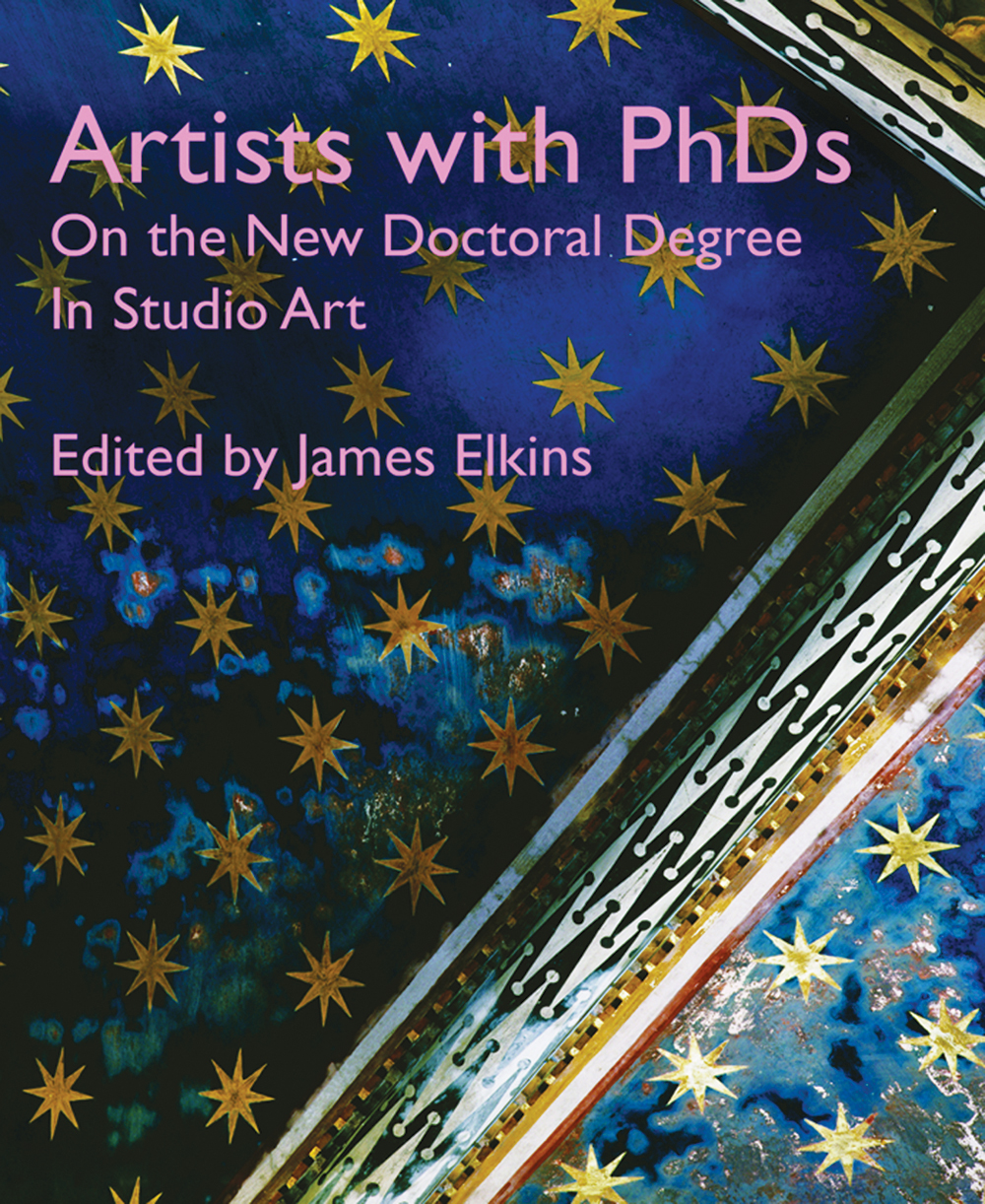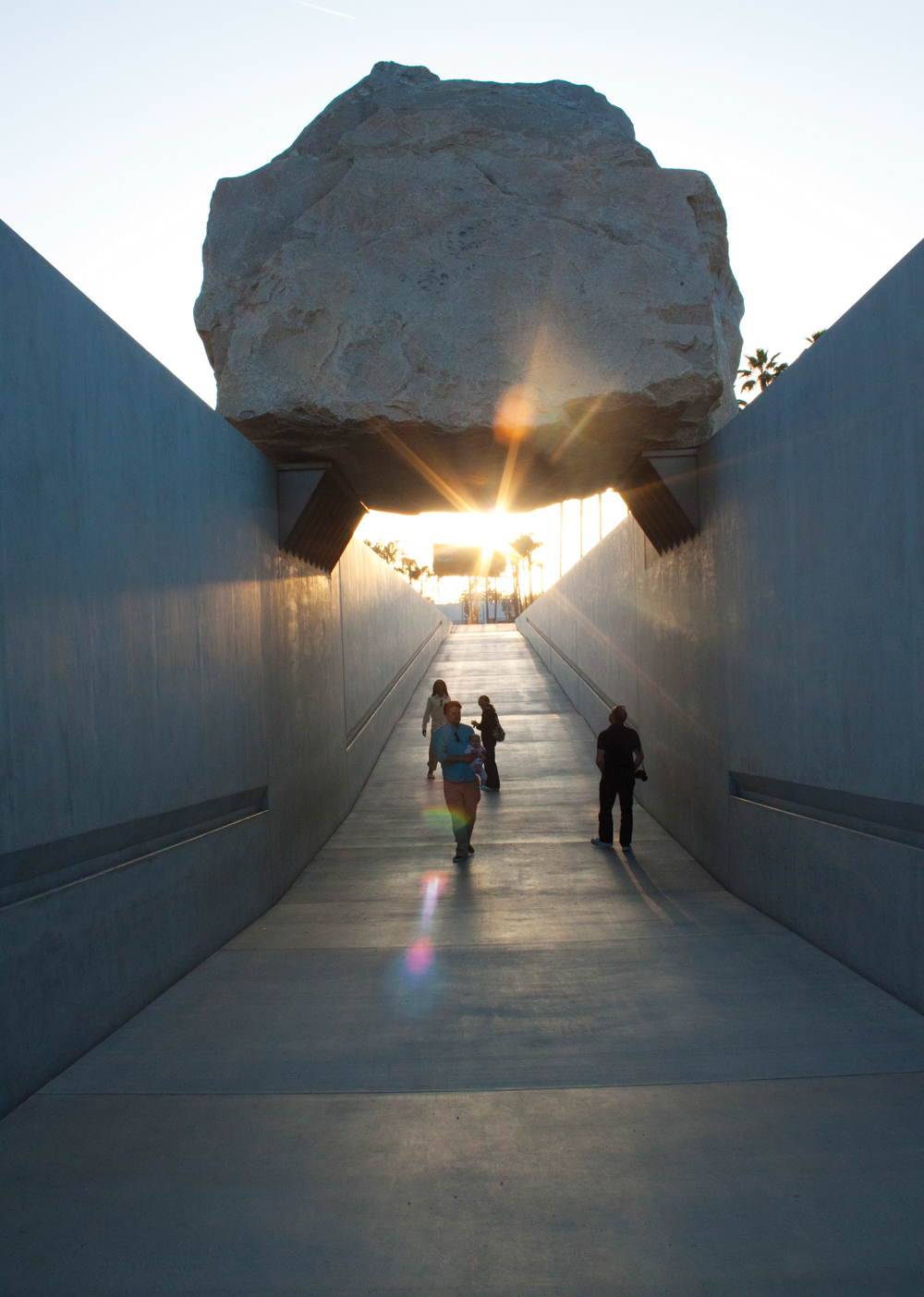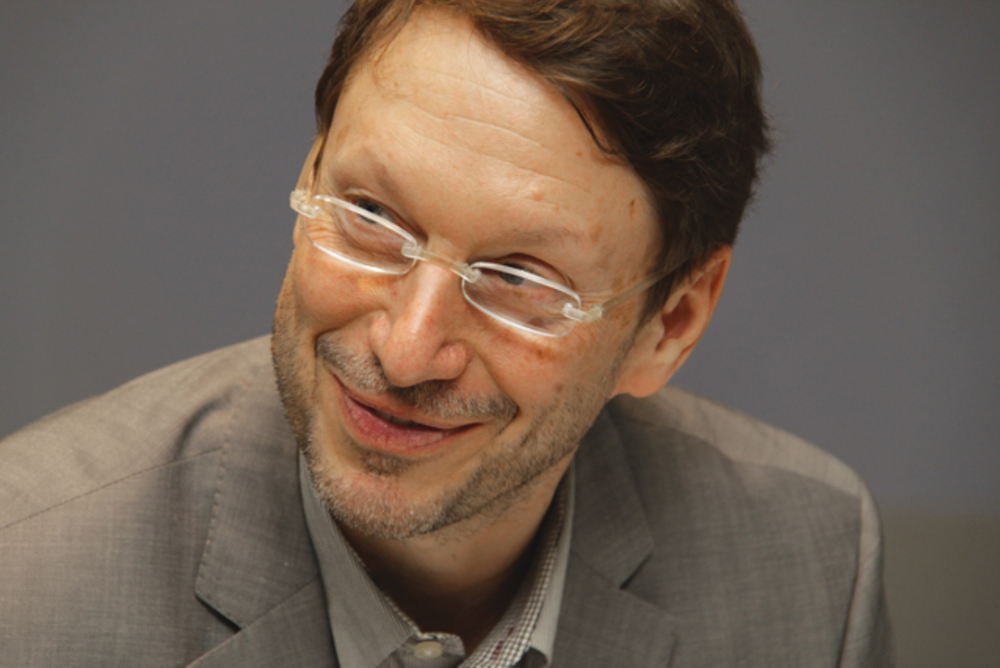« Features
From Studio PhDs to the Kantian Sublime. A Discussion with James Elkins
James Elkins was on tour when we first caught up with him for this e-mail discussion. He is one of the most celebrated and sought-after lecturers in the fine arts today. We discussed his research concerning the international advance of the studio PhD in the arts, and then we mulled over his recent essay “Against the Sublime” and explored its significance in considering the works of several artists.
Elkins grew up in Ithaca, N.Y., separated from Cornell University by a quarter-mile of woods. There at Cornell he earned a Bachelor of Arts degree. He later earned a Master of Fine Arts, Master of Arts and a PhD at the University of Chicago. He teaches at the School of the Art Institute of Chicago, where he is E.C. Chadbourne Chair in the Department of Art History, Theory, and Criticism. He has published 21 books in addition to his prolific essay and anthology contributions.
His writing focuses on the history and theory of images in art, science and nature. Some of his books are exclusively on fine art (What Painting Is, Why Are Our Pictures Puzzles?). Others include scientific and non-art images, writing systems and archaeology (The Domain of Images, On Pictures and the Words That Fail Them), and some are about natural history (How to Use Your Eyes). His most recent books are What Photography Is and Art Critiques: A Guide. Current projects include an edited book series called the Stone Art Theory Institutes and an edited book series called Theories of Modernism and Postmodernism in the Visual Arts.
By Stephen Knudsen
Stephen Knudsen - I see that one topic very much on your mind right now is the worldwide spread of studio art PhD programs. You have written on the topic in your book ART Critiques: A Guide (2012 edition). You also compiled and edited the recent book Artists with PhDs: On the New Doctoral Degree in Studio Art. Last year you wrote that as of 2012 there were about 140 studio-based PhD programs worldwide (with the most in the UK). Has the expansion continued into 2013?
James Elkins - I haven’t re-counted, but I’m keeping an up-to-date list online at <http://tinyurl.com/m5jjyak>. The exact number is impossible to know because, for example, some programs are advertised but don’t yet have students. There are lots of gray areas.
S.K. - I just checked out your very helpful webpage. I see that you have lists broken down by country with some description. It looks like the running tally is around 152 studio art PhD programs, with seven now in the United States. University of California San Diego is one example. You also note rumors of proposed programs at five other U.S. institutions, and that list includes where you teach, School of the Art Institute of Chicago (SAIC). Thanks for keeping this tally.
J.E. - What would be really helpful, I think, but also nearly impossible, would be a description of the kinds of programs these are. But institutions that develop particular approaches to the degree don’t always put those in print, mainly because it can be hard to agree on how to describe yourself as an institution, and partly because these ’styles’ or ‘manners’ of teaching are seldom spelled out. It has occurred to me that the studio-art PhD-and the MFA-would be much more interesting if individual institutions put their strengths, weaknesses, and philosophies into print. Imagine reading “The New School of Art in Atlantic City emphasizes post-Pop, East Coast realism mixed with Yale-style abstraction. We teach theory, but mainly Lacan and Rancière.” Or-here’s one I think a real institution should have- “The Bucharest National University of the Arts is one of the few places in the world where you can study fresco restoration, and our faculty represents the rich heritage of Romanian modernism.” But of course institutions will never advertise themselves in those ways.

Artists with PhDs: On the New Doctoral Degree in Studio Art edited by James Elkins. New Academia Publishing, LLC. First Edition. 2009.
S.K. - You have taken this PhD topic on the road. How many countries (and institutions) did you visit in delivering lectures or conducting research on this topic in the last 12 months?
J.E. - Six: Norway, Israel, Singapore, Portugal, South Africa and Uganda. I joke with my wife that the reason I read the astonishingly dull administrative literature on the PhD is to get these invitations. But of course it is very interesting: There’s a great deal of reinventing of the wheel taking place. Makerere University in Kampala, Uganda, for example, has the PhD, but hasn’t theorized how studio practice and research work together. These institutions tend to just grow organically, sometimes with minimal or idiosyncratic links to conversations about the PhD elsewhere.
S.K. - If what seems now to be inevitable, if the PhD becomes the new terminal degree standard in studio arts, certainly this will significantly change the whole spectrum of fine arts education in the university. Yes?
J.E. - Eventually I suppose it will have to. In some places, like Australia, there is less emphasis on the MA or MFA now that the PhD is widespread. But the principle effect will probably be a fundamental change from the art critique (the ‘crit’) to the PhD-style proposal or presentation. The art school ‘crit’ is fundamentally about judgment; PhD-style conversations are about quantifiable or specifiable hypotheses, research agendas, evidence, and outcomes. It’s an enormous difference. Critiques are about people judging work; PhD conversations (there isn’t a good word for them) are about exploring and articulating meaning. Critiques are between unequals; PhD conversations are modeled on conversations among researchers. No one has studied this contrast yet; there is a massive literature on the PhD and virtually nothing on the ‘crit’ or on the progression from one to the other, which will be startling for many students.

Michael Heizer, Levitated Mass, 2012, 21' tall granite quarry fragment in a permanent installation at the Los Angeles County Museum of Art. Photo: Joshua Dildine and Hilary Scott Dildine.
S.K. - What are some of the other pro/con arguments being advanced in the discussion on PhD studio programs?
J.E. - There’s a whole laundry list: They’re too expensive; they’ll keep people in an artificial ivory tower until they’re 30 years old; they require long dissertations, usually between 60,000 and 200,000 words; they will ‘academicize’ art (I always thought that was a funny objection, because surely the word ‘academicize’ is fairly academic); they will strangle the MFA; they will produce graduates who are double threats because they’ll have advanced degrees in studio and in scholarship. My line about these and other objections is that they were all raised before, about the MFA, and nothing stopped that degree from spreading around the world.
S.K. - In your witnessing of so many institutions internationally, what impresses you positively as far as artists involved in and/or graduating from these programs? I would be interested in any examples-especially painters of promise.
J.E. - Haven’t seen any painters of promise! I’ve seen plenty of elaborate exhibitions, often strongly text-driven, with beautifully formatted and printed PhD dissertations (they become works of art in themselves). The PhD is beginning to produce art that has a recognizable flavor: the dissertations have a familiar range of references (Bennett to Bourdieu to Badiou) and a familiar style; and the artwork tends to be archival, complex and graphically involved. The effect-the emotion-tends to be low-key. The intellectual demands tend to be high. It is an art form for the 21st century.
S.K. - I recently wrote a Huffington Post review on Michael Heizer’s Levitated Mass, and in the brave new world of web 2.0 you showed up in the comment box-thank you. I thought your response tapped into some new and promising metamodern theory.
Levitated Mass is a 340-ton granite boulder that was moved across counties at great cost to be perched over a trench on the grounds of LACMA. I noted its cosmic relationship as an April setting sun was eclipsed by the rock and then the sun dropped perfectly into the trench below the rock. So walking slowly down the descending ramp the rock rose and the sun dropped. In response you said,
“Heizer makes me wonder if it’s worth revisiting the idea of the sublime. Here, sublime is vast in time and space, which is close to Kant’s original ‘mathematical’ and ‘dynamical’ sublime. There is an overlay of late romanticism in the emphasis on individual viewers’ reactions, and there’s a need for hyperbole and excess (the largest stone, the most amazing illusion, the unparalleled installation) that remind me of what Karsten Harries called ‘the kitsch economy.’ All this, by way of saying Heizer’s is an old-fashioned sublime, unlike more recent Postmodern senses of the sublime, which have to do with inevitable partial failure, lack of transcendence, the inadequacy of the artist’s imagination and means, an uncertainty about the function of the sublime, modesty in scale and ambition, and references to local, subjective time rather than time that comes in pieces other than infinity and ‘geologic’ epochs. In short, I wonder if this, and associated pieces and projects, are as much a part of an older modernism as they are part of the newly immersive, spectacular pieces we’ve come to expect from artists like Eliasson in the last 10 years.”

Neo Rauch, Aprilnacht, 2011, oil on canvas, 118 1/8” x 98 3/8”. Courtesy of David Zwirner, New York and Galerie Eigen + Art, Leipzig/Berlin.
S.K. - Any other thoughts on this? I sense a real enthusiasm in you for the relevancy of Immanuel Kant and the driving force that he still provides in much critical discourse and artistic impulse.
J.E. - Hmm, I didn’t mean that. I meant that Heizer’s work is out of step with a fair amount of contemporary production, which prefers a lower-key postmodern sublime. I am sympathetic with Hal Foster’s recent attempts to rethink the critique of the spectacle so it can include people like Eliasson, but I wonder if they aren’t throwbacks to an earlier sense of the sublime. Have you seen this? <http://www.academia.edu/163451/Against_the_Sublime>
S.K. - I like your take on Levitated Mass a great deal, but moving the argument to the contemporary arts in general, do you agree that Kant merits enthusiastic relevance and application to the discourse once everything he has to offer is considered? For example, if writers like Stephen Hicks have the lineage correct, then Kuhn, Rorty, Derrida, Lyotard, etc. descend from Kant’s new standard of subjectivity-if not directly, then by way of Hegel and then more importantly Heidegger. It seems that postmoderns and moderns alike have made use for at least a piece of Kant. I think of Greenberg’s invocation of disinterested beauty in his late modernist program. Do you see Kant as the great underlying force in the critical discourse on recent and current art when framed in this way? If so, who are the current writers that you would recommend for a deeper reveal on Kant in this regard?
J.E. - You’re right about the importance of Kant, and I don’t think that goes against my argument about the over-application of the sublime. After all, any application of the sublime to art is not a Kantian usage. I don’t yet have a clear sense of how to measure Kant’s importance. I would follow Stephen Melville and Whitney Davis in this regard-I mean I’d study what they have to say before proceeding.
S.K. - Concerning your 2011 essay “Against the Sublime” <http://www.academia.edu/163451/Against_the_Sublime>, I am a fan and hope your arguments do something to change the way we use the word and the application of the concept. I selfishly would love that my use of ’sublime’ in honoring works like Levitated Mass-within the parameters you posit-would actually be honorific and meaningful again. I will excerpt your introduction from Against the Sublime here in hopes of initiating some additional readers:
“This essay is the result of a long interest in the sublime, which turned into a long dissatisfaction. I will propose three different but connected arguments. First, the sublime is not well used as a trans-historical category: it does not apply outside particular ranges of artworks, most of them made in the 19th century. Second, in contemporary critical writing the sublime is used principally as a way to smuggle covert religious meaning into texts that are putatively secular; and third, the postmodernism sublime is such an intricate concept that it is effectively useless without extensive qualification. In brief: saying something is sublime doesn’t make it art, or bring it closer to the art world, or provide a judgment that can do much philosophic work or result in much understanding. I think the sublime needs to be abandoned as an interpretive tool, except in the cases of romantic and belated romantic art.”
Perhaps this seems dispiriting at first pass, but in the end it potentially liberates a word and concept from the abuse that makes it apply to all art and the rendering of the concept to be useless. Would you agree?
J.E. - Yes, absolutely, with the caveat that ’sublime’ might not be the word that’s needed. I’ve just finished writing some notes on the art historian Alexander Nemerov, whose philosophic position has a lot to do with terms that could be described as the sublime-but he doesn’t use the word-I mean, he doesn’t use it as often as he might. Instead, he uses a number of context-specific terms, like ‘defamiliarization.’ (This is on tinyurl.com/p4kpj3o.)
S.K. - I am hoping you could clarify a small point in the essay: I am inferring from the essay, perhaps incorrectly so, that contemporary works with an overlay of Romanticism (enthusiasm for the Kantian sublime) have little contemporary relevance at least concerning the throwback aspect to the 19th century. If the sublime experience is the backdrop that pushes back on our empiricism and our “mediation, translation, deferral of meaning, miscommunication and the social conditions of understanding,” is it not in some important way giving us the mysterious containment that decidedly provokes the sentient being even in early development? Therefore, should contemporary art that regards the sublime in throwback fashion-works like Levitated Mass-be considered potentially relevant and important for doing so?
J.E. - Yes, nice point; I don’t object to that. Except, as above, that I’m not sure the word ’sublime’ is necessary. See? I’m stubborn.
S.K. - I would be interested in bringing painting into this discussion. Do you think of any current painting that is sympathetic to a sort of 19th century Romantic sublime as being important? Perhaps this kind of sentiment, staying with the Germans, is subtly evident in some of the current, new Leipzig school, for instance, Neo Rauch at times?
J.E. - Interesting example. For me, this isn’t related to the qualities of the sublime-vast, horrible, unencompassable, infinite, powerful, dark, etc. To me, Neo Rauch is more about an East German version of late 20th-century Surrealism. That sky might fit the bill, but not the rest. But to your first question: Yes, Tacita Dean is a good example of an artist immersed in what she takes to be the sublime, and she’s relevant to contemporary practice. So, in a different way, are Sugimoto’s ocean photos.
S.K. - Finally, there is the philosophical issue of the intelligibility of phrases such as “Reality beyond human experience” or “Realities beyond human language games or discourses.” What do you make of this? For poststructuralists, language is the ‘sea’ in which we are all engulfed; there’s no escaping it. One thinks all the way back to Nietzsche and Wittgenstein in this regard. But (no pun intended), is this the last word? For example, do you believe there are facts about the universe that humans will never know to be true? And are there meaningful experiences beyond language? Perhaps the issue of the sublime does become relevant again in these contexts…Your thoughts?
J.E. - Wow, this is becoming a very cosmic conversation. A lot depends on what you mean by ‘facts’ in your question, “Do you believe there are facts about the universe that humans will never know to be true?” But instead of opening those questions, let me just say that these kinds of questions are the precise reason that talk of the sublime seems important: In other words, regardless of the ‘facts,’ the desire is that there is something out there. For me, even that desire is measurably an artifact of Romanticism and Modernism.
S.K. - Moving on to another topic, what was the last show of memorable contemporary painting that made you look twice in a good way?
J.E. - I loved the 2009 museum debut of R.H. Quaytman’s work; since then she’s become less interesting. I first saw her work in Boston at the Institute of Contemporary Art. I liked the absolute control of the work, combined with its apparent carefully planned purposes, which remained entirely opaque.
S.K. - What is on the back burner for your next writing project?
J.E. - I am leaving art history, theory and criticism. For the last three years I have been working on a piece of experimental fiction. I’m teaching this material and posting on two websites: <http://305737.blogspot.com/> and <http://writingwithimages.com/>
S.K. - Just extraordinary. I am looking forward to more on this new facet of James Elkins. I sense that we need to do another interview in the future if you are game.
J.E. - My pleasure, and thanks for pushing back on my stubborn theory of the sublime.
S.K. - Thank you.




































Leave a Reply
You must be logged in to post a comment.